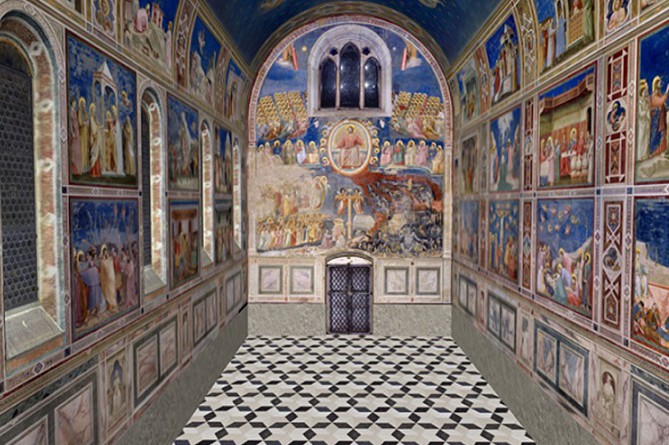Scrovegni Chapel
In Veneto we find one of the the most beautiful places of worship, we are talking about Scrovegni Chapel, also known as the Arena or the Annunciation.
Located in the historic center of Padua, this beautiful chapel houses the famous Giotto cycle of frescoes of the early fourteenth century, worldwide famous masterpiece.
Background
 The Scrovegni Chapel was built (in the area of the ancient Roman arena of Padua) in the early fourteenth century by Enrico Scrovegni, a rich banker from Padua. Dedicated to the Virgin Mary, the chapel was originally connected to the family Scrovegni palace of which it was private oratory and future family mausoleum.
The Scrovegni Chapel was built (in the area of the ancient Roman arena of Padua) in the early fourteenth century by Enrico Scrovegni, a rich banker from Padua. Dedicated to the Virgin Mary, the chapel was originally connected to the family Scrovegni palace of which it was private oratory and future family mausoleum.
This sacred building was built by Enrico in expiation of the sin of usury committed by his father Reginaldo Scrovegni.
Inside the chapel we find one of the most important masterpieces of Western art.
The cycle frescoes by Giotto.
 Indeed Enrico Scrovegni called the Florentine Giotto to fresco the chapel between 1303 and 1305.
Indeed Enrico Scrovegni called the Florentine Giotto to fresco the chapel between 1303 and 1305.
The beautiful frescoes that cover all the walls narrate the events in the life of the Virgin Mary and Christ. At the conclusion of the history of human salvation there is the infamous and spectacular Crack of Doom on the wall opposite the altar.
In 1881 the chapel was purchased by the City of Padua and over the years it underwent several restorations.
The Scrovegni Palace that was originally connected with a side entrance to the chapel, unfortunately was shot down in 1827.
The structure and the frescoes of the Scrovegni Chapel.
Giotto’s frescoes cover all the walls of the Scrovegni Chapel and they are a truly thrilling sight to see, you can not go to Padua and not visit this truly amazing place.
The frescoes:
- Stories of Gioacchino and Anna, Mary and Christ
- The monochrome allegories of Vices and Virtues
- The counterfacade with the Crack of Doom
- Under the throne of Christ Judge we find some images painted by Giotto
- The starry vault
- Presbytery, Apse and Sacristy (the first two can be seen from the nave, at a distance, masterpieces by Giovanni Pisano).

